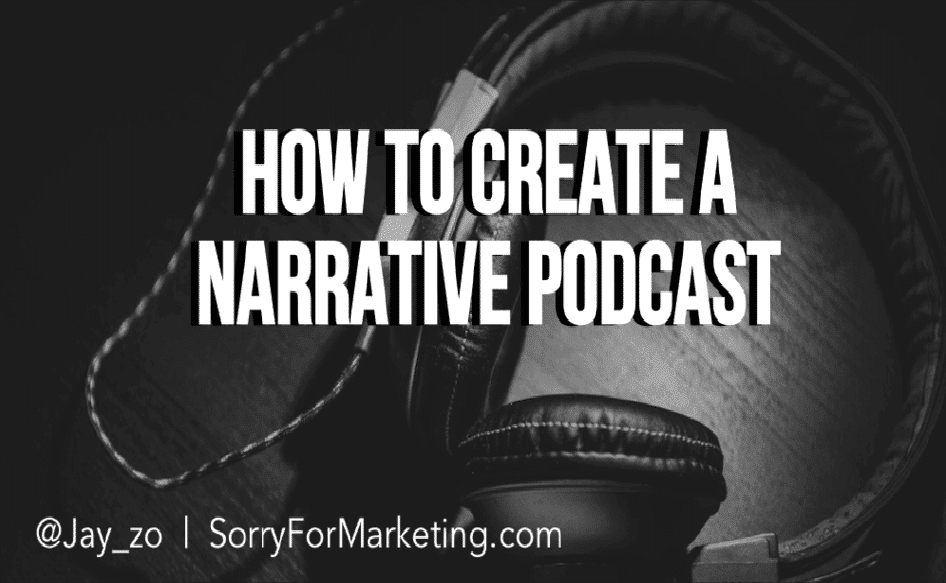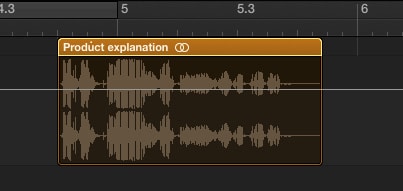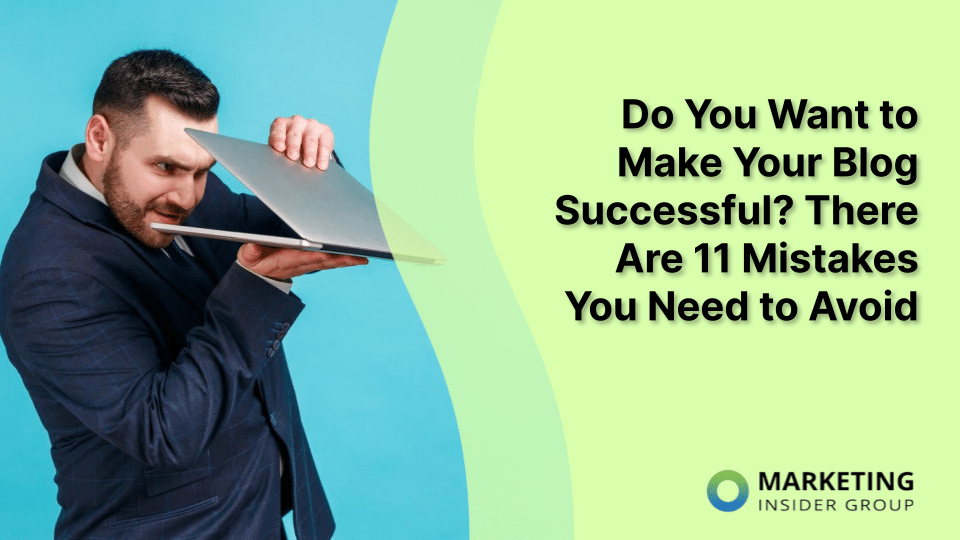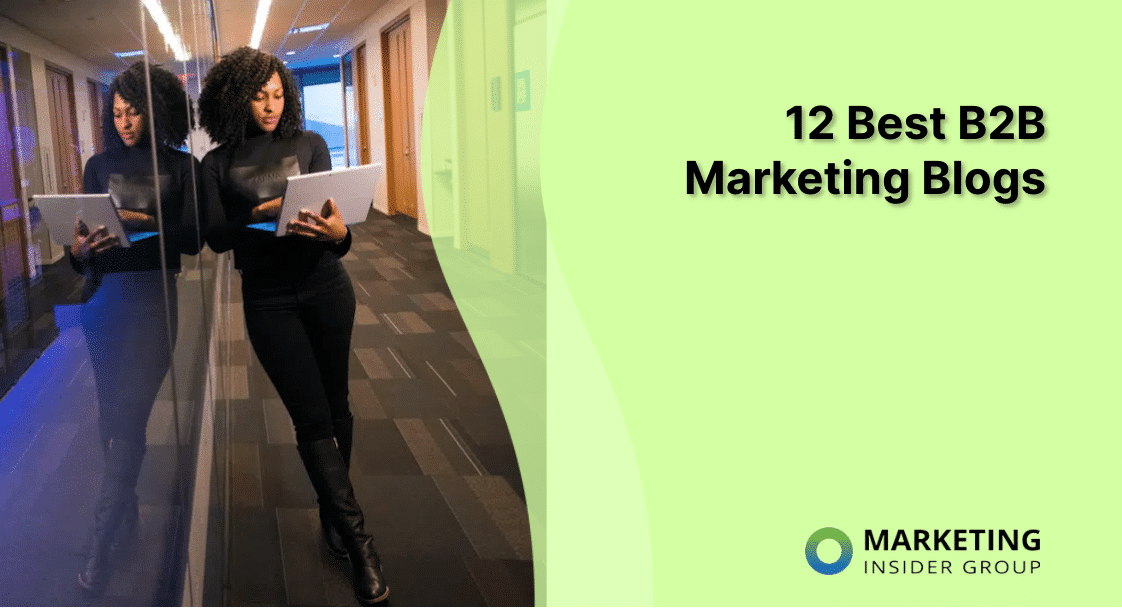
Podcast Production Playbook for When You’re Sick of Talking Heads
A version of this post originally appeared on the Content Marketing Institute blog. And also in my brain. Like a big, singular PNG file that I put onto my screen. (What? How do you write?)
“Hey. Welcome to my blog. It, um…I write about content here, and uh… oh, Jimmy is here too. Hey Jimmy. How’s the weather over there? [JOLTING BUZZING SOUND]”
You’d never start a blog post that way. So why in the name of all things cheesy do so many business podcasts start that way? It’s no secret that podcasting is exploding right now, along with the phrase “podcasting is exploding right now.” And everywhere you turn, very smart businesses are recording very smart businesspeople discussing very smart business ideas … and it all feels like cramming a fork in your ear to hear it.
I couldn’t be more excited about podcasting, including all the white space it still has left to claim and own as a creator. (Hell, I even wrote a poem about an experience had while podcasting. I got 99 problems, and they’re all pretty bad, you guys…)
Despite all that, I’m even MORE excited about the creative nascency of the medium. There are so many awesome interpretations of what a podcast could be that are currently untapped and unknown. It’s awesome.
But as we continue to experiment, there’s one proven approach to creative podcasting that you should already know about: narrative podcasts.
The what and why of narrative podcasts
Narrative podcasts are, as the name implies, story-driven shows — as opposed to interviews or gameshow-like recordings. They rely on heavy editing to splice together the right story, pulling from interviews and other recordings, sounds, and music. Many feature a host who narrates the story, almost as if everything else happened in the past.
NPR is, of course, the gold standard here, though narrative podcasts can run the gamut in terms of tone. I can share this particular process thanks to my producing and hosting a show called Traction for my firm, NextView. Our stories are less ethereal than those on NPR, but narrative podcasting is still very much an option for us. (That’s a long way of saying: Those who dislike NPR should still consider this a great way to tell stories.)
So why are narrative podcasts so great? In addition to sounding wonderful because the focus is more on storytelling than pontificating, this style is perfect for all three groups involved in a typical show production.
1) Brand/host/producer: You’re in total control of the final product. You can stand out by making your show sound different than the rest, and you don’t need to rely on a guest sounding pithy or engaging all in one take.
2) Your guests: They can relax knowing that editing can make them sound great. They can pause to think, speak naturally with ums and uhs, and even ask to redo answers. It’s about getting the best quote recorded, not the best end-to-end conversation. (If they ramble, for instance, that doesn’t derail your show as it would in other formats. You can simply lift out the best content.)
3) Listeners: They stand a greater chance of sticking around to enjoy the show. Podcasts are a linear medium. They experience a podcast from start to finish. In a written article, you can introduce all kinds of other stimuli on one page – images and graphics, embedded videos and audio, calls to action in dozens of forms, and more. As of today, little technology exists to change the way we consume podcasts. So narrative storytelling addresses the ONE thing you need to worry about as a producer: listener drop-off. Can you get listeners to the end? Can you maximize the time spent listening, not just optimize the vanity metric of downloads? Stories are built to do that.
How to create a narrative podcast
If you’re like me, you’re not formally trained in radio production nor do you have a budget to make others in the industry blush.
So, here’s a lean process you can use that won’t cost more than $200 to $300, but requires some (smart) elbow grease.
— Pre-production —
1) Select your equipment.
For me, that used to mean:
– Two Shure SM58 microphones ($99 each) with foam windscreens ($2) to soften certain sounds, like the pronunciation of hard Ps, that could sound harsh or loud.
– A mixer. I bought a simple Alesis MultiMix with four microphone inputs just in case I need that many. I typically use two. A mixer allows you to use multiple microphones for better in-person audio, as well as adjust certain aspects of each individual’s sound.
Recently, as I’ve been traveling more and want to avoid lugging equipment around, I switched from these things to simply:
– An Apogee MiC 96k microphone.
Other equipment you’ll need:
– Recording and editing software. I use GarageBand and, for Skype calls, record using plug-in from Ecamm to record. (Note: If you use GarageBand to record, save often. If you use it for editing, export the entire recording to iTunes first to preserve a backup before you start editing. Otherwise, you could be destined for sadfacetimes.)
– Music: Try the amazing Marmoset for a huge library of searchable, filterable, use-however-you-want songs.
2) Research your subject and draft your questions.
Much digital ink has been spilled on this, so I’ll refer you to Copyblogger’s great post on podcast preparation.
Bottom line: Over-prepare, always.
3) Send your questions and give context to your guest ahead of time
It’s incredibly helpful to pre-wire guests by sending a PDF with basic information about the show, as well as your specific questions.
I’ve found it helpful to include four sections:
– Context on the show – I include links to our channels as well as basic notes like “please book a small room to help with echoes.” I introduce our narrative style and reassure the subjects that the interview will be easier as a result.
– Two sets of questions – We use a set unique to the episode and a set of recurring questions. Some recurring questions are favorites that help get great quotes. Listeners never know that I’m asking the same questions because I delete the question in editing. But I also end each show with the same series of three personal questions called “Alpha, Beta, Scale.” (By the way, this is an example of using segments in your content, or small subsections or callouts that hold or direct attention.)
– Thank you note – It’s the right thing to do since the individuals are taking valuable time out of their day and trusting us to tell their story publicly.
You’re now ready to record your narrative podcast.
— In production —
If you’ve completed the pre-production steps, this part should be the easiest of the process. To keep things brief, here are a few reminders:
1) Tune your volume … and your guest … to your liking.
As the producer or host, it’s your job to make your guest feel comfortable, and it’s yourjob to ensure the final episode is great. If you don’t like the answers or the episode, it’syour fault, not the guest’s (hence the importance of both pre-production research and post-production editing).
Once I’ve thanked a guest for spending time with me and finished any (non-forced) small talk, I do three things:
– First, I explain the show by reiterating the notes from the PDF I sent. Specifically, I describe how the style of the show lets them pause to think, redo answers, and so forth. That puts them at ease.
– Second, I have them identify themselves so I get that quote recorded.
– Third, I ask every guest the same question: “Do you have any pets?”
Even though I remove this question later, I find that it causes people to relax, smile, or laugh, and start raving about their favorite pet. (If they don’t have any, I ask why, and if they ever did or ever will.) You can practically HEAR someone smiling on a podcast so this creates that tone while preventing guests from launching into their overly formal radio voice.
2) Interview your guest(s).
Lean on your research but don’t get overly wedded to it. It definitely helps to have at least some experience, particularly as a journalist, conducting interviews. You need to roll with what they say, pursuing interesting stories off script and using follow-up questions to get better answers if they’re being vague or omitting details.
— Editing/post-production —
This is where the narrative-style show truly breaks from the more common or basic interview that you execute and publish.
After you finish recording, you have this amorphous lump of audio to whittle into a meaningful story.
The editing process for the show looks roughly like this:

1) More specifically, here’s what you’re doing as shown in GarageBand:
You start with 100% of the raw audio. (With me so far? See? This can be easy.)

>>> Be sure to save an extra copy as a backup. <<<
2) Next, time-stamp the best parts of the audio while cropping out (deleting) the rest.

As you listen to the recording, you want to identify the best quotes from the show. I find it’s easiest to crop as you go and rename each section, along these lines:

At this point, while you listen and time-stamp/crop, you’re thinking about the end story because you’re hearing the material you’re molding into that narrative.
This step makes the next part easier.
3) Write your script.
Yes, you should write a script. I don’t know about you, but the podcasts that make my skin crawl usually have a host stumbling around going, “So, um, so YEAH! Let’s get started. Um … let’s see.” There’s no room for that in a narrative-driven episode, so your script puts the polish on the disconnected audio snippets.
Because I know the quotes with which I have to work, my writing looks something like this example, which is pulled from our episode with the co-founder and CMO of NatureBox. I bold the names of an audio snippet to play at that point in the script. I use capital letters and ellipses to signal where I should emphasize a word or pause for effect.
Hey there, I’m Jay Acunzo, and I’d like you to imagine that THIS was the next item on your to-do list.
Quote: “Can’t touch it or taste it”
…. NOTHING. That’s your food brand. Go try to get people to buy it.
Sound like your idea of a fun weekend?
Fade in intro music.
Well … for Ken Chen and Gautam Gupta, that’s exactly where they began the journey that would lead them to launch NATUREBOX, a well-funded and well-LIKED startup selling healthy snacks to consumers everywhere.
This script helps me add the narration that’s so important to these shows. I recorded this on a second audio track to avoid accidentally overwriting the other audio and to better manipulate things like volume.
A quick word on hosting and scripting this kind of podcast: A great host, in this case, isn’t overly present. The host is not the driver of the story but rather the listener’s guide to it. The host is on the sidelines, next to the listener, pointing out stuff that’s interesting.
Here’s what the audio looks like for this part. Note the second layer containing the narration:

When you’re done with this step, you effectively have an episode that you could publish. But there’s one more magic element to great narrative shows – music.
4) Finally, add your music or other sound effects.
As you follow these steps, you’ll start to hear where music could be an asset. There are a few common reasons to add a song, instrumental track, or sound effect:
– To highlight transitions between stories or points being made – For instance, in one episode of Traction, my colleague Lee Hower describes what it was like to work for tech industry titans Elon Musk and Reid Hoffman at PayPal and LinkedIn. When he says the word Elon, I start playing one track softly in the background, fading out a few seconds later. When he says the word Reid, I wanted to call the listeners’ attention to the shift in the story and remind them to keep listening, so I played a different song.
– To snap a listener to attention – I hinted at this earlier, but there are times when starting or stopping a song abruptly can prompt your audience to snap awake and continue listening to the show. Remember, as a linear medium, you need to be thinking about listener drop-off at all times.
For example, if your guest says the word “boom,” you could play a track softly during the story leading up to that word before abruptly cutting off the song right at that word.
– To introduce sections of your show – Intro music is an obvious example, but there are other ways to do this. Maybe you do a listener-email segment or a Top 5 list in each episode. Playing the same music leading into each segment tells the listeners that something different is happening – and recurring listeners learn to anticipate the goodness that’s coming upon hearing the music.
Ex-NPR star and Gimlet Media founder Alex Blumberg uses music to differentiate between sponsors and the rest of his show StartUp. He plays special sponsor music in the background of the ad and then plays the first few seconds of his show’s theme to return from commercial.
The list of use cases for music rolls on, as does your podcast in your listener’s ears … if you edit well.
(By the way, you should definitely check out Blumberg’s tremendous talk about podcasts. Marketers will also be fascinated to hear how they mismanaged native advertising and recovered from it. Note that I have no affiliation with his company. Just admiration.)
The choice we face now
Creating narrative podcasts is unquestionably harder than simply recording an interview and uploading it as is. So we all face a choice: Produce something that sounds like everyone else (fork, meet temple) or do what’s hard and strive for originality.
If you’ve read anything on this blog before, you know where I’m going with this. (And if you haven’t, then, hey! Welcome! Take a seat. I’m gonna need, like, 10-12 minutes a week. Now then…)
Do what’s hard. Strive for originality. Push yourself to understand the medium, have empathy for the listener, and create a special podcast.
Quite literally, the best time is now.
This post originally appeared on Sorry for Marketing.






